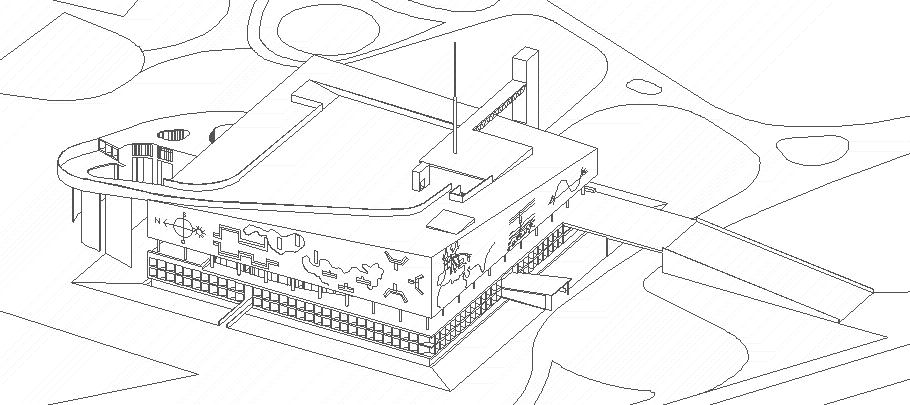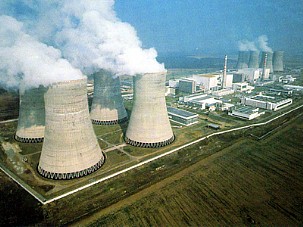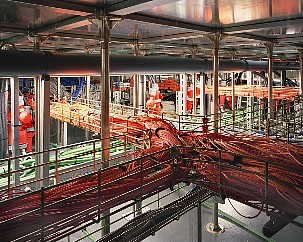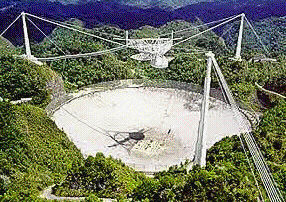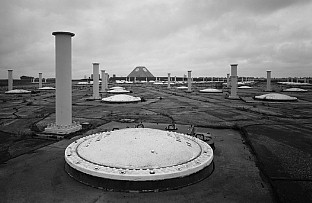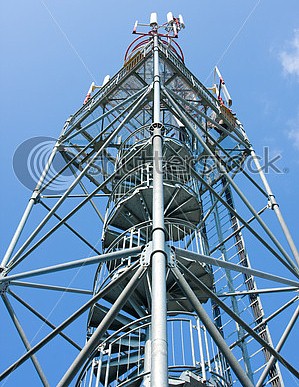1998.08.02 12:55
Re: Nightline Nurb
Actually, I was at a crab cookout last night and one of my friends (a non-architect) said she saw some architects on TV saying how tremendously unfortunate it is that not only is America now so ugly, but, even worse, the average American doesn't even know that it is all ugly out there. References were made to strip malls and the like.
Just off the cuff, I would say that the packaged "beauty" of someplace like Seaside, FL is an unfortunate panacea.
I think my next design will be a gated community of messy vitality--a place where, for example, all the gas stations double as palaces, most of the houses are under huge modern canopies (a la Corbu's Weber Pavilion/today's American gas stations), and the whole population of the place is ugly and ordinary.
Thank God the twentieth century is now over!
1998.09.11 10:06
big sign now gone
With all the recent discussion here regarding Venturi, signage, semiotics, etc., I thought it worthwhile mentioning that the Venturi, Rauch & Scott Brown big BASCO building sign (in Northeast Philadelphia) is now gone. The demolition (which is what I assume happened) occurred fairly recently.
The building was bought by BEST soon after BASCO "built" the sign in the early eighties. Since BEST went out of business in the early nineties, the building and its big alphabet sign have been derelict.
It is indeed sad to see such a perfect example of "theory into practice" architecture relegated to the virtual existence of photographs.
Perhaps one lesson to learn here is that whenever architectural design is so closely tied to commercialism and consumerism, then its fate as something fleeting is almost guaranteed.
1998.11.13 15:11
Re: do tell
When I think of architecture and show, my mind makes all kinds of associations. First, I am hard pressed to think of an example of architecture that doesn't represent (show) something, and in that sense all architecture could be seen as some kind of show. Next, I think of how architecture is usually shown in photographs, that is, usually without people in the same picture. Could this be an indication of the autonomy that architects like to perceive in architecture? I'm reminded of a story an architect/friend's wife told about visiting Le Corbusier's Villa Savoye. There were a handful of other architects there, and not only were all the architects taking virtually the same pictures, but they were all making sure not to get each other in any of the pictures. I immediately thought the best pictures would have been of the architects doing this; at least that would have been a unique set of pictures.
1998.12.02 11:20
Re: def: AutoCAD Architecture
With regard to "flatness", take a look at Louis Kahn's first independent building commission - Ahavath Israel Synagogue, Philadelphia, 1935. My point being that "flatness" is an architectural aesthetic with a long history and very much independent of CAD. There are also some Venturi, Scott Brown and Associates buildings that absolutley revel in their flatness, e.g., any of the 1980s and 1990s university laboratory buildings. I also suggest you read you read Tom Wolfe's The Painted Word, within which you will find an analysis of the flatness of 1960s POP art.
| |
1998.12.02 20:54
Re: def: AutoCAD Architecture
I am a big fan of Le Corbusier's late work, especially the unbuilt projects. Although he hasn't stated as much (as far as I know), Koolhaas is very much inspired by Le Corbusier's late work, in particular the Palais des Congrès, 1964.
1998.12.05 11:30
assimilating architecture?
Since c.1500, humanity (however, mostly Western/European culture) has operated predominantly under the influence of an assimilating imagination--a process whereby everything about this planet, and even beyond, has been and still is run through the workings of absorption -- absorption of land, data, capital, whole societies, etc. (Science in general is a very assimilating process, and genocide is just one example of absorption in the extreme--purge.)
According to chronosomatics, a theory based on the interrelationship of time and the human body, there are roughly 200 years left where assimilation will play a major role with regard to the human imagination, and, more importantly, the next 200 years of assimilation will also be the largest and grossest "chunks" of assimilation yet, perhaps culminating with the total and complete knowledge of every bit of rhyme, reason, cause and effect of the human genome. Chronosomatics also shows us that metabolism (equal doses of creation and destruction) has been steadily becoming the new and eventually predominate operation of the human imagination. Therefore there is a strong pluralism within the operation of the human imagination today as well.
Are there thus some things within the last 500 years architectural history that relate to the notion of an assimilating architecture? Is there something about the present state of architectural affairs that points to an assimilating and/or metabolic architecture? For example, is the high eclecticism of the late 19th century one form of assimilating architecture? Is Le Corbusier's Purism akin to assimilating architecture in the extreme? Is the current widespread/global land development precisely a continuation of the assimilating process begun by the likes of Christopher Columbus? Will humanity, 200 years hence, have come extremely close to assimilating (for better or for worse) every square inch of this planet?
Personally, I think the answer is yes, but that's not the worst of it. After assimilation ceases to be a major element within the operation of the human imagination, humanity will spend 500 years working under the influence of an almost purely metabolic imagination. Imagine living on Earth when pretty much everything thought and done is create and destroy, create and destroy, create and destroy. . . . .
1998.12.17 14:45
Re: city making and city breaking
It has not escaped my attention that Operation Desert Fox has spurred some discussion here within the design-list that very much resembles the notion of humanity presently working metabolically, i.e., equal doses of creation and destruction. With regard to what I last said here concerning the possible notion of an assimilating architecture, my further elaboration of there presently also being an imaginative operation with a metabolic nature now seems very timely. I thus wish to interject one example of metabolic architecture/urbanism.
Berlin: foremost metabolic city of the 20th century
No doubt the city of Berlin, Germany has undergone unequaled metamorphosis throughout the course of the 20th century.
Berlin reached one of this planet's highest levels of urban density within the first quarter of this century.
In the 1930s, Berlin became capital of the National Socialist's Third Reich, an unprecedented create/destroy political machine, extreme even in its assimilation, the Holocaust purge.
1945, the Battle of Berlin leaves the city all but totally destroyed.
During the Cold War, Berlin increasingly becomes a very real duality, a duality much like metabolism itself.
1989, the Berlin Wall opens, falls, and within a few years the city is again united.
Y2K, Berlin begins the 21st century as a completely new German capital.
The pattern of creation and destruction completely pervades the last 100 years of Berlin's history, but then again it is also the capital of one of the 20th century's foremost metabolic nations.
Berlin and Germany are not alone in their metabolism, however. One only has to look at Japan and its two A-bomb cities, the two Koreas, the once two Vietnams, and there is always Israel and Old Jerusalem.
No one has yet suggested the likelihood of two Iraq's and/or two Baghdads, but it wouldn't surprise me in the least if that place somehow became very metabolic as well.
| |
1999.02.23 19:08
Re: irrational architecture
You raise an interesting point which suggests a paradigm shift in how we perceive (and I use that term loosely) space-architecture, however, I don't think such an operational shift is all that "simple," nor does the notion of "space moving through us" necessarily eliminate architecture. To your idea, I'd like to add a complementary idea (not entirely mine) regarding the continuum of time.
It is common to perceive time as moving, specifically in a linear fashion--past, present, future. Time, as Einstein suggests, is a continuum, and therefore past and present coexist, and thus, relatively speaking, past and future do not move. It is the present that moves through the continuum of time and, much like a radio, picks up "signals" relative to its position within the continuum band. Within such a continuum paradigm, both we AND space move through time. In terms of endurance of presence, however, much great architecture clearly holds its own in terms of the span of time (and here the Great Pyramids of Egypt getting close to 5000 years old are the prime example). Perhaps what we today are experiencing more than anything in our present "built environment" or "space" is its (almost patented) premature obsolescence.
most modern?
1999.03.14 15:29
Stephen Lauf
design-l
architecthetics
| |
I have already declared within schizophrenia + architecture what I believe to be the most modern building of the 20th century--Le Corbusier's unbuilt Palais des Congrès à Strasbourg, 1964.
I am well aware that so far this declaration is not much more than one man's opinion, and therefore, before I outline my reasons for picking this building, I am interested in what building others on this list would pick as the most modern building of the 20th century.
Steve
ps
From my perspective, no matter how you define it, 'modern' has without question been a major attribute of this century. Perhaps naming those buildings that are most 'modern' will also help to define 'modern'.
|
Re: most modern?
1999.03.15 05:40
Hugh Pearman
architecthetics
| |
If you remove from the equation the way the building looks - for after all, plenty of buildings can appear very "modern" but be deeply conventional beneath--interesting prospects open up.
I'll nominate Tempelhof Airport in Berlin, 1938, by Ernst Sagebiel. It replaced an earlier "modern" airport and is designed in the stripped-classical style beloved of Nazis, so at first seems a throwback. But don't be fooled by the skin. Sagebiel designed it to last until the year 2000--and this is precisely what it has done, virtually unchanged. Politically, it was sanitised by being the hub for the Berlin Airlift, and is now a kind of shrine to the notion of freedom.
Surely the airport building is the key building type of the 20th century. Given the extraordinary advances in air travel since 1938, it is miraculous that Tempelhof has remained relevant. Sagebiel's great move was the huge cantilevered canopy out over the apron - planes draw up under it, and passengers disembark in the dry with no need for airbridges.
Now that the big planes call instead at Tegel, Tempelhof has achieved a new lease of life as Berlin's commuter-airline terminal. Even so, it is finally to be pensioned off, at precisely the date Sagebiel envisaged--not because of the building, but because the runways cannot be extended. No other city airport in the world has lasted 60 years unaltered.
It is also one of the world's largest office complexes--second in size only to the Pentagon, I am told - and when you look at the plan, it's believable. Any way you look at Tempelhof (apart from surface styling), it is absolutely extraordinary.
Who's next?
Hugh
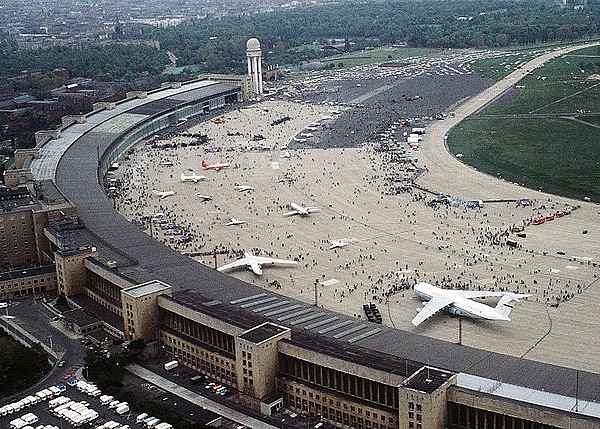
Tempelhof Airport, 1984
|
PS: Re: most modern?
1999.03.15 05:46
Hugh Pearman
architecthetics
| |
PS. that Corb thing is surely a spoof? The Villa Savoie with funny bits attached?
Hugh
|
"That Corb thing" referred to by Hugh Pearman is Sober House 1 which was featured alongside a hyperlink to the Palais des Congrès. Confusion thus ensued, as manifest in my response to Hugh below.
| |
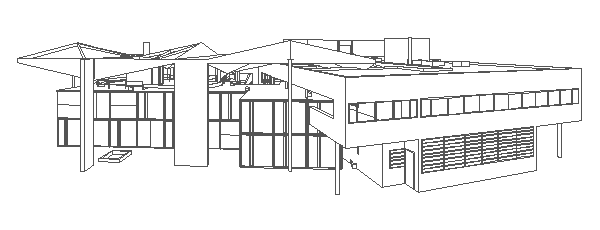
|
Re: PS: Re: Most modern?
1999.03.15
Stephen Lauf
architecthetics
| |
I wouldn't exactly call the Palais des Congres a spoof, although it has much to do with the Villa Savoie. I'll be uploading some web pages comparing the Villa Savoie and the Palais next week--essentially the latter building is somewhat of a 'baroque' re-interpretation for the former, and holds the key to the otherwise ethereal promenade architecturale. The Palais is, I believe, the first attempt to design the (united) European parliament -- maybe that is a spoof??? ;-)
Additionally, the main floor (level) of the 'Corb thing' is very much (spatially and programmatically) what a major portion of airports are now-a-days--compacted 'cities' in a sense. Moreover, the ramps (which ultimately) lead to the sky (to a huge roof garden) carry the airport analogy/metaphor ever upwards. The Palais holds other goodies as well. Hint: look for what Corb places on the main auditorium stage. Is it a swan song?
ps
I am very glad to hear your nomination of Tempelhof; even though I am not at all familiar with the building/complex, your reasons, I believe, hold sound observations and conclusions whereby a clearer understanding of (20th century) modern is arrived at. Thanks, it's exactly what I was looking for.
|
(most modern?) rear-view architecture
1999.03.22 18:37
Stephen Lauf
design-l
| |
Brian asks and answers:
100 years in the future, will architectural historians look back at buildings such as those of Industrial Light & Magic as critical to understanding the nature (and perception) of the natural and built
environment in architectural terms?
[George Lucas' special-effects house ILM created the movies Star Wars, Jurassic Park, Terminator.]
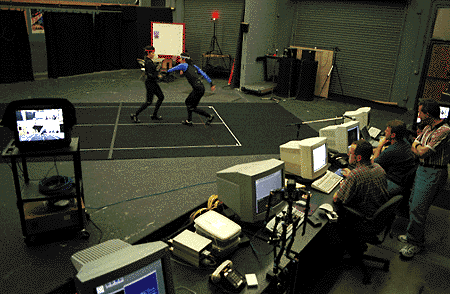
A shot of ILM's motion capture studio
What other buildings, not found in textbooks today, would make a list of important but unrecognized 'architectures', representing the economic/social/political-culture and order of civilization..?
My list starts with power-plants, TV stations, radio, IPSs, super-computer centers, linear accelerators, observatories, radio telescopes, mines, missile sites, telecommunications towers...
|
| |
Steve's perspective:
A week or so ago I posed the question as to which building(s) [architectures] qualifies as "the most modern of the 20th century." There were no direct immediate replies from this list. Today, a week or so later, Brian's question at the top of this post appears to me to be the same question. Moreover, Brian's list qualifies most abundantly in its enumeration of the 20th century's most modern buildings.
ps
Brian's suggestion (in another recent design-l post) of hi-tech military tents as ideal housing for the homeless is a definite forerunner for the "most modern building of the 21st century" category.
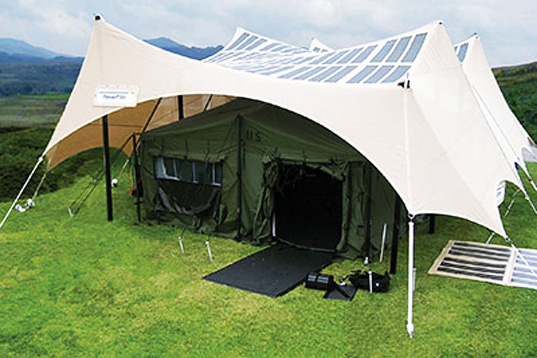
|
Re: (most modern?) rear-view architecture
1999.03.22 19:02
Brian Carroll
design-l
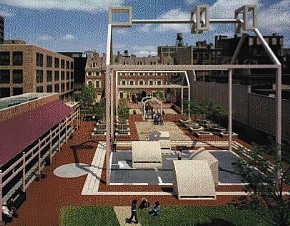
| |
I think the reason I didn't respond directly to that query was that, from my architectural vantage, I do not think of a specific building as much as a new typology of building types.
Given that a new building typology may alter the traditional (or modern) experience of a building, the question may also change; such that I would name a building such as the White House, in its global panopticon of TV, Radio, Phone, Computer-- as the most (hyper-)modern work of architecture. That is, taking into account the role of the electrical infrastructure, in relation to the basic functioning of a building, and as a nodal point for these new types of buildings such as TV stations, ISPs, etc...
The reason I would argue is that the nature of buildings/architectures have changed with the new electronic environment [with a new materiality, new sense/experience of space-time, new order of light, electric, etc.] such that the "order" of architecture & building has also changed.
Way far out, it may be to say that 'structure' now has equally as much to do with architectures as structures of thought as much as material.
I think that is the future that the 20th century has founded for building.
I think, with respect to the traditional view of architecture and order, that, the Ben Franklin House by Venturi that Steve has documented at Quondam is the best candidate for this new invisible order of building.
bc
|
Re: most modern?
1999.03.30 05:07
Elliot
architecthetics
| |
The idea of nominating a "most..." (Modern, high-tech, beautiful) buildings is of no real interest to me, as such. But as a theoretical issue it is, I admit, intriguing. As if first one would have to define Modernism, and then find a corresponding building--questionable, even. Of course such a building might be said to correspond in different criteria. Of all buildings of the 20th century I HAVE SEEN/EXPERIENCED AT FIRST HAND, the most I admire is Aalto's Villa Mairea, but though its composition has allegiance to Cubism, it also has pedigree in Finnish vernacular; thus one may speak of on-going traditions. Would this be thus very un-modern? But as much as I love it, I could never live there; it seem too big for me, and too iconic, too famous, not a real home... for that one must make it one's own. This building is a country house, a manor house no less.
|
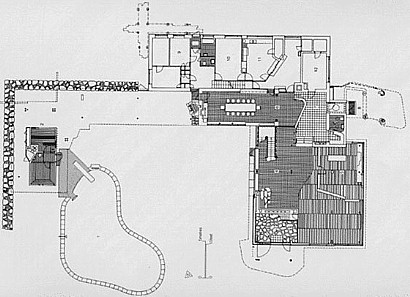 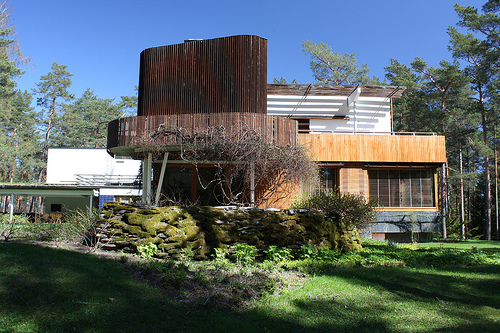
|
Le Corbusier's 5 points: roof garden, pilotis, the free plan, fenêtre en longueur, the free facade.
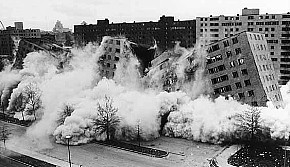
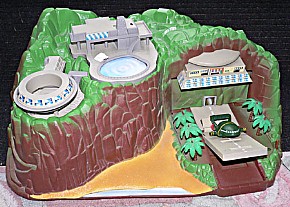
| |
And Le Corbusier's 5 Points are inversions of classical principles, and thus programmatically appropriate but nevertheless tied to classical ontologies. Might thus we even have to decide between Modernism after-the-fact or something more charitable (corresponding author's intentions with concrete realisation)? According to the latter, the "most-Modern" would not necessarily be something positive (Pruitt-Igoe perhaps?). I like Hugh's example--as he said airports are something typically 20th century; and he interestingly implies the point that the Berlin airport does not [have to] be a case of "form-follows-function" as the spaghetti tubes of many airports (is not Foster's Stanstead (?) airport in UK much like the Berlin airport too?).
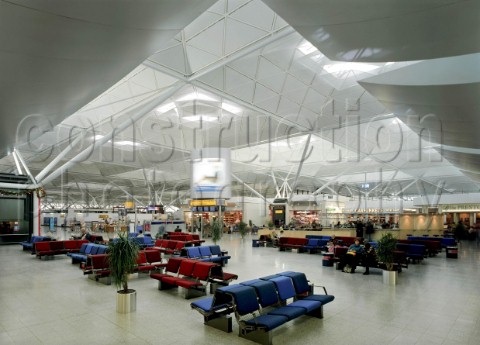
Taking this one step further, might not 'virtual architecture' be the most typical modern--continued deferment of place? Another point is man's complete domination of nature--the best examples are fictional: animation child's series Thunderbird's home (International Rescue), where the swimming pool slides away to make room for the runway, and the whole nuclear family is Divine--like ready at hand to save humanity, but in fact man never moves his/her body in these visions, the machine vision. Transformation continually. Ah yes, this is future visions, not yet realised.
Elliot
|
Re: most modern?
1999.04.02 04:34
Marcus Ormerod
architecthetics
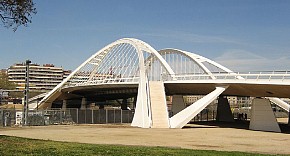
| |
I agree with Elliot about having to define "modern" and "modernism" before we can really get a meaningful survey. Also we need to know whether you can only vote for buildings you have experienced first hand (rather than through the lens of another person's camera). I would also be interested to know what criteria people use to judge these buildings on, i.e. coherence, beauty, symmetry, functionality, etc. Also I find it interesting Elloit when you say that although you admire Aalto's Villa Mairea you could never live there. Obviously this is not important in a "most" category ;-)
Most of the "modern" buildings I have visited have left me disappointed when compared to the photographs I have viewed before going to them. The one that really fooled me was Calatrava's bridge in Barcelona - Bach de Roda. I had a picture in my mind's eye of a rather dramatic large structure and when we finally tracked it down it was diminutive and lost in the surrounding landscape. Having said that I would offer most of Santiago Calatrava's work as being good both architecturally and technically. Also in terms of work visited I enjoyed the work of Gaudi in Barcelona - but I think that was just because of its playfulness.
My vote for a modern building I have visited an thought excellent was Juha Leiviska's Myyrmaki church and parish centre, 1984, Helsinki. Although I did not visit when there was a service on I did feel as though this was a place for people that belonged to the people. unfortunately the technical quality of the work was lacking - cracks in the bell tower brickwork. The ambiance in the church was brilliant.
Marcus
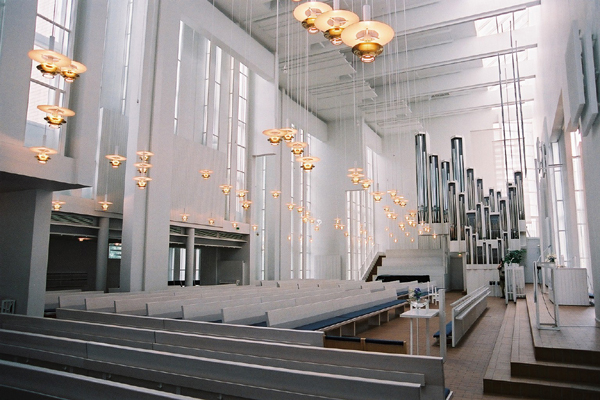
|
Re: most modern?
1999.04.04 15:09
Ene Priimets
architecthetics
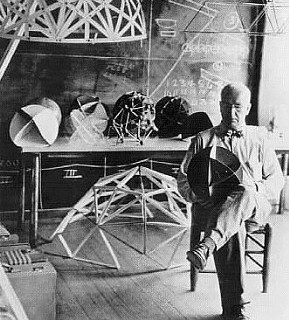
| |
The "most modern" building; where the "modern" is the philosophical term--the post-Medieval, the man's domination of nature & such, and the "most" means that essence of the "modern" is expressed in the building at its best; would be probably a science-fiction virtual building or a building created in order to improve artificially man's life. Here Buckminster Fuller comes to my mind first. I am nevertheless quite suspicious of such "modernist" labeling in case of art, which architecture is supposed to be, too. As art is a form of expression, (somebody may probably disagree) a "modern" building would mean in our case that an architect has expressed his/her ideas about the modern/contemporary life where modern or modernist means the period usually since the 20's up till now (let alone the post-modernism) when expressing the contemporary has been fashionable (however, an architect probably always does it more or less, because architecture is an environmental art and life goes in an environment, like it or not) and the "modern" is the name for a style. I wouldn't worry about whether there really exists such a style or did I date it correctly or not because styles seem to be more or less arbitrary anyway, created for making the discourse on the subject easier.
So the "most modern" means just a powerful artistic expression of such modern mentality in form as in function. As it is obviously impossible to measure it, it's a matter of personal taste. I agree that Le Corbusier's work may well apply, e.g. Villa Savoye which is already become a symbol of the modern. I would also add the work (virtual and real) of the Russian constructivists, Ginzburg, Golosov, Tatlin etc. where the (philosophical)modernist-utopian idea of social engineering, new ways of living, is also powerfully present. We may only imagine how would Moscow and St. Petersburg and other Russian cities look with constructivist/modernist palaces in place of present Stalinist ones if the architects were allowed to work longer in the "style". It's really sad that they weren't.
An interesting issue is new building types as airports are, they are certainly very "modern" by nature. If there are many great examples of modern airport, it probably means that the novelty of function has been a really good source of inspiration for great artistic expressions.
Ene
|
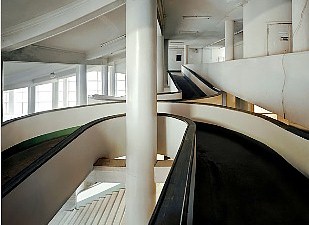 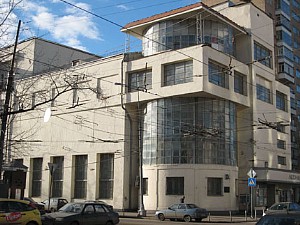 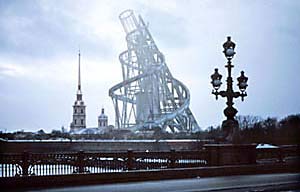
|
